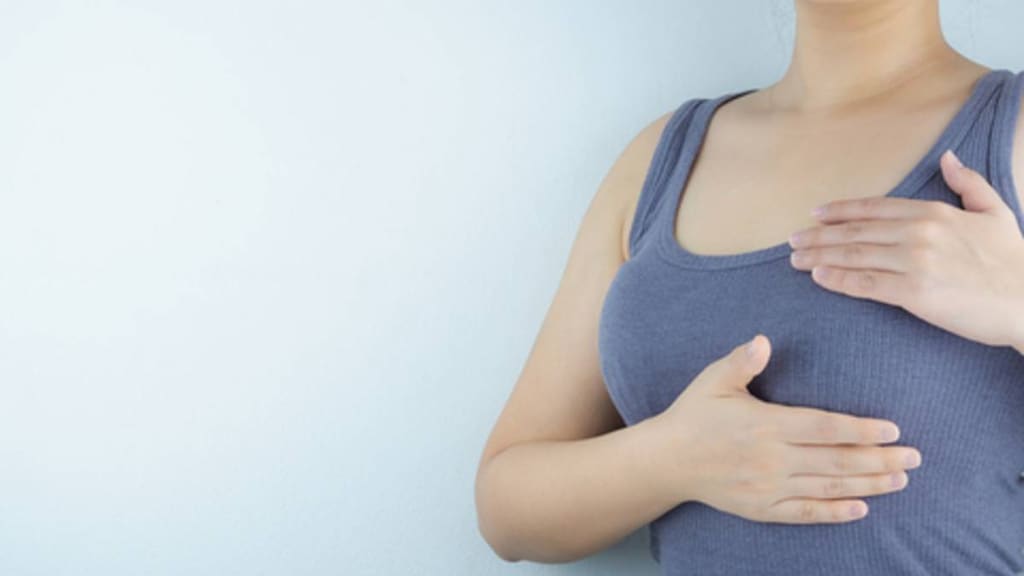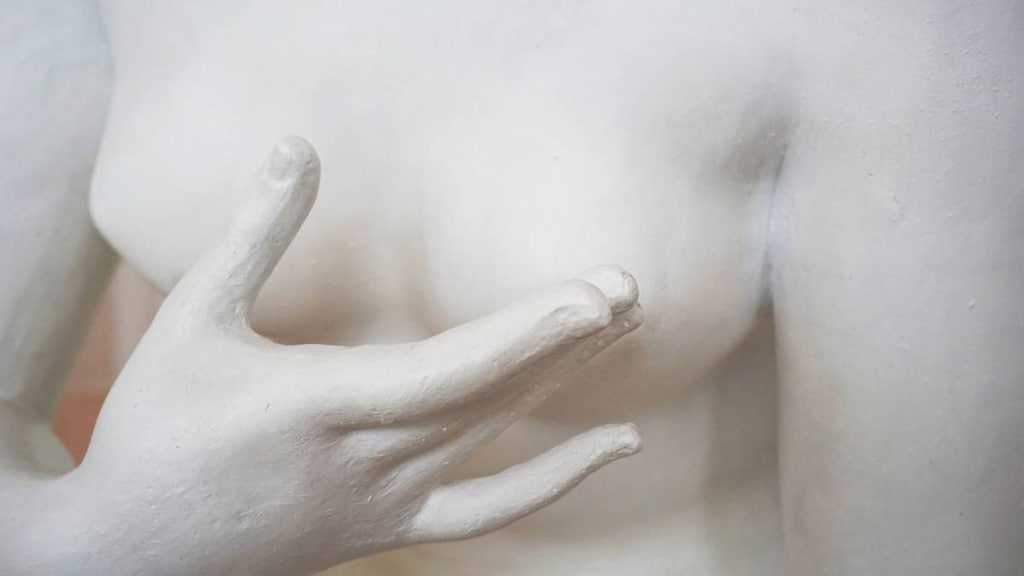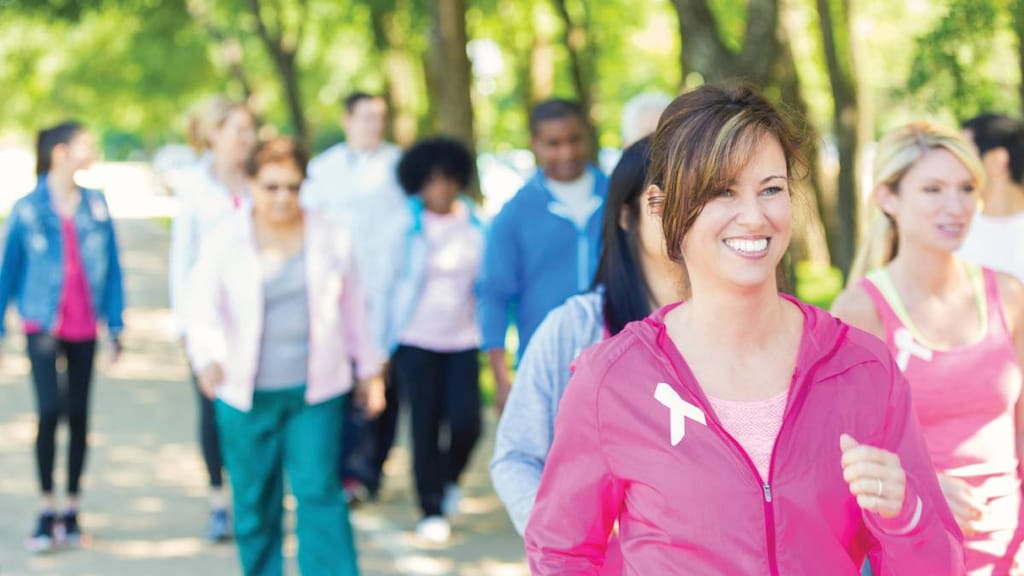Breast Cancer Self-Exam: A Step-by-Step Guide

Should you examine your breasts every month to be on the lookout for signs of breast cancer?
The answer to that might be a bit more complicated than what you expect.
The answer is a resounding yes if you use breast self-exam in conjunction with other screening tools. These include regular physical exams by a medical provider, mammography, ultrasound and magnetic resonance imaging (MRI) if necessary, says BreastCancer.org. Besides, breast self-exams won’t cost you anything and you know your breasts better than anyone.
However, if you're at average risk for breast cancer, and a breast self-exam is all you're doing to ward off breast cancer, it's not enough. In fact, the American Cancer Society no longer recommends breast self-exam as a screening tool for women of average risk, noting that research studies have not shown it to be as good at finding early cancers, when they're most treatable, as are mammograms. Relying too much on breast self-exams can be troublesome.
The American Breast Cancer Foundation does recommend that women perform monthly breast self-exams — and urges that women start doing this at a young age, when in their 20s.
How to do a breast self-exam
If you're going to examine your breasts regularly, here’s how to do it so it’s meaningful:
Step 1: Stand in front of a large mirror that allows you to see your breasts. Keep your shoulders straight and your arms at your side.
Check to see:
- Are your breasts their usual size, shape and color?
- Are your breasts even? Do you see swelling anywhere?
- Have your nipples changed position, or are they pushing inward instead of sticking out?
- Do you notice any fluid from either or both nipples? It could be white, colorless or bloody.
- Do you notice puckering or dimpling of the skin anywhere?
- Look at your veins. Do you notice any unusual patterns?
Step 2: Do a second check, but this time raise your arms. Look for the same changes as in step 1.
Step 3: Do a third check, and this time lie down. Use your right hand to feel your left breast and your left hand to feel your right breast. Use the flat pads of your three middle fingers. Keep your fingers flat and together and rub them over your entire breast. Make small circles about the size of a quarter, making sure not to miss any area.
Tips:
- Keep your fingers on your breast as you move them. Don’t lift them up. To make sure you feel the entire area, go in an up-and-down pattern, as you would if you were mowing a lawn. Start at your collarbone and go as far down as your bra line.
- Change pressure. Apply light pressure to feel the tissue near your skin. Use a little more or medium pressure to feel the layer slightly lower. And use firm pressure to feel the tissue that is closer to your rib cage. Use all three pressures at every spot, the Mayo Clinic advises.
- Squeeze your nipple. This helps when checking for discharge.
Step 4: Repeat the procedure of examining your breasts with your fingers while you're in the shower. It’s easy to feel your breasts when your skin is wet and slippery. Follow the same pattern you did in front of the mirror and when you were lying down.
Making the most of a breast self-exam
Here are some additional tips that will make your breast self-exam more valuable:
Make it monthly. The more often you examine your breasts, the more likely it is that you'll notice if something has changed. Plan your breast self-exam for the same time each month. If you’re menstruating, wait a few days until the bleeding has stopped to do your exam. Your breasts will be less tender between periods. If you are postmenopausal, plan to do your exam on the same day each month — such as the first or last — so you don’t forget.
Know thyself. Every woman is different, and the different areas of your breast can feel different. For example, you may find the most lumps in the upper, outer area, toward your armpits. The lower half of your breast might feel like a pebbly beach. Another area may feel like oatmeal.
Keep records. Draw a map of your breasts and label your findings. This is especially important when you’re first starting to do self-exams. Refer to this record when you think you might feel something different from one month to the next. It will help you remember if that’s normal for you or if it truly is something new.
Ask for help. If you’re not sure you’re doing your self-exam correctly or just want confirmation that you are, talk to your doctor. Either your doctor or perhaps a nurse who works with your doctor will be able to show you the best technique and answer any questions.
What if you find a lump?
If you’re examining your breasts one month and you think you feel something small that was never there before, what should you do?
First, don’t panic. Many things, including hormonal changes, can cause non-cancerous breast lumps. It could be a benign fluid-filled sac or cyst, which is most common in women under 40, says the Susan F. Smith Center for Women’s Cancers at the Dana-Farber Cancer Institute. Or, it could be a fibroadenoma, a fibrous tumor, which is also benign. Fibroadenomas are most common in women in their 20s and 30s.
Cancerous lumps tend to be irregularly shaped, hard and immovable, the center says. They also likely do not cause any pain.
Next, call your medical provider. Even if you don’t believe the lump you feel or change you saw is anything serious, have it checked out by your doctor. Let your doctor determine the next steps.
Besides reviewing your health history, your doctor can examine your breast with imaging studies. The type — whether mammogram, ultrasound or MRI — will depend on your age and whether you are pregnant or breastfeeding.
Treat any lump with extreme caution until your doctor can determine whether it’s benign or malignant.
Other screening methods
Besides breast self-exam, what screening methods should you use to look for breast cancer?
The American Cancer Society recommendations vary, depending on whether you’re at average risk or at high risk for developing breast cancer. They also depend on your age.
Women at average risk are those who have not had breast cancer or who don’t have a family history of breast cancer. Women who are at average risk don’t have a genetic mutation that is known to raise their risk (BRCA gene) and did not have chest radiation therapy before they were 30 years old.
The American Cancer Society recommends that women of average risk start screening with an annual mammogram by age 45. Annual mammograms are described as optional for women 40 to 44 years old. For women 55 and older who are of average risk, the cancer society recommends that women have a mammogram at least every other year, or every year if they prefer.
Women considered at high risk include those who:
- Have a family history of the disease
- Have had genetic testing that shows they have BRAC1 or BRAC2 gene mutations
- Have a first-degree relative with the BRAC1 or BRAC2 gene mutation
- Have had radiation therapy to their chest when they were 10 to 30 years old
The American Cancer Society recommends that women at high risk for breast cancer begin screening at age 30 and have screenings every year. Women at high risk also should talk to their doctors about whether they should have other screenings as well, the group says.
Article references
- BreastCancer.org, Breast Self-Exam https://www.breastcancer.org/symptoms/testing/types/self_exam
- SpottingCancer.org, Monitor Your Breast https://www.spottingcancer.org/monitor-your-body/?gclid=CjwKCAiAis3vBRBdEiwAHXB29BMzI1fK2SrMjhnJv5j0-NlABckLp8tNeNjeZzzd-QgXO1oaIYFDyRoCYeoQAvD_BwE#breast
- Mayo Clinic, Breast self-exam for self awareness https://www.mayoclinic.org/tests-procedures/breast-exam/about/pac-20393237
- National Breast Cancer Foundation, Breast self-exam https://www.nationalbreastcancer.org/breast-self-exam
- American Cancer Society, American Cancer Society Recommendations for the Early Detection of Breast Cancer https://www.cancer.org/cancer/breast-cancer/screening-tests-and-early-detection/american-cancer-society-recommendations-for-the-early-detection-of-breast-cancer.html
- Dana-Farber Cancer Institute, What Does a Breast Lump Feel Like? https://blog.dana-farber.org/insight/2015/10/what-does-a-breast-cancer-lump-feel-like/
- American Breast Cancer Foundation, Breast Self-Exam (BSE) https://www.abcf.org/think-pink-education/be-proactive/breast-self-exam-bse
- American Breast Cancer Foundation, I Found a Lump, Is it Cancer? https://www.abcf.org/think-pink-education/i-found-a-lump-is-it-cancer



